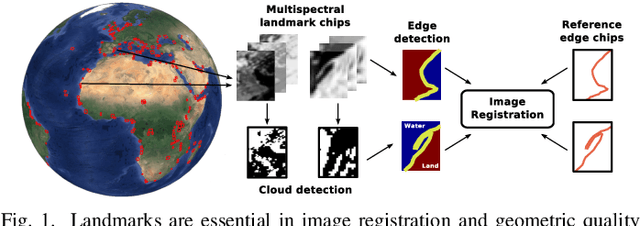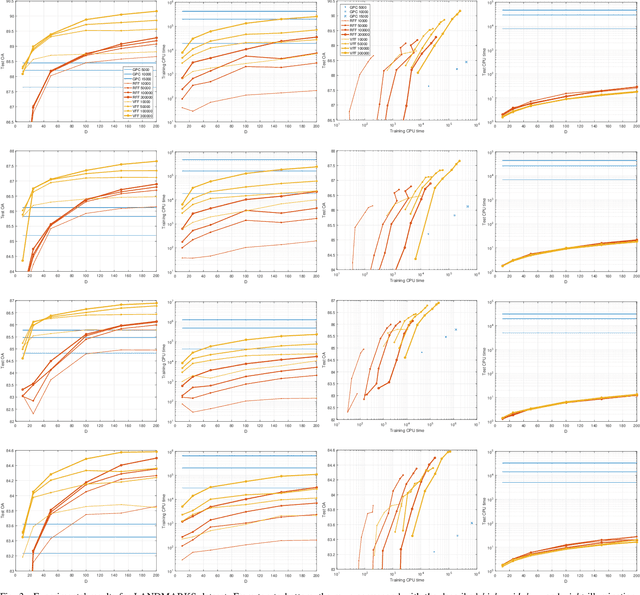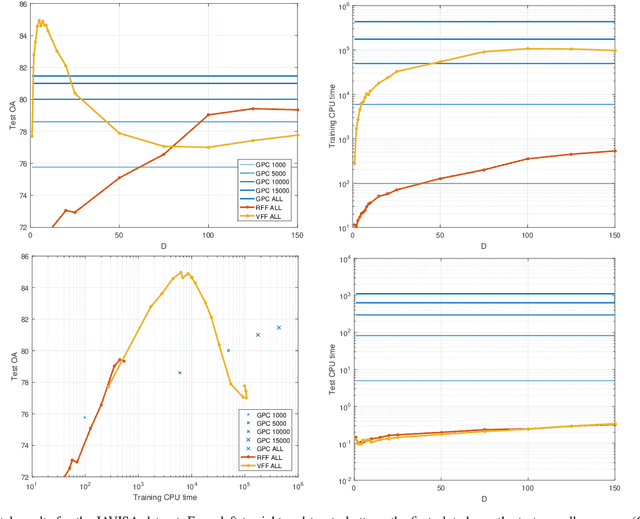Remote Sensing Image Classification with Large Scale Gaussian Processes
Paper and Code
Oct 03, 2017



Current remote sensing image classification problems have to deal with an unprecedented amount of heterogeneous and complex data sources. Upcoming missions will soon provide large data streams that will make land cover/use classification difficult. Machine learning classifiers can help at this, and many methods are currently available. A popular kernel classifier is the Gaussian process classifier (GPC), since it approaches the classification problem with a solid probabilistic treatment, thus yielding confidence intervals for the predictions as well as very competitive results to state-of-the-art neural networks and support vector machines. However, its computational cost is prohibitive for large scale applications, and constitutes the main obstacle precluding wide adoption. This paper tackles this problem by introducing two novel efficient methodologies for Gaussian Process (GP) classification. We first include the standard random Fourier features approximation into GPC, which largely decreases its computational cost and permits large scale remote sensing image classification. In addition, we propose a model which avoids randomly sampling a number of Fourier frequencies, and alternatively learns the optimal ones within a variational Bayes approach. The performance of the proposed methods is illustrated in complex problems of cloud detection from multispectral imagery and infrared sounding data. Excellent empirical results support the proposal in both computational cost and accuracy.
 Add to Chrome
Add to Chrome Add to Firefox
Add to Firefox Add to Edge
Add to Edge